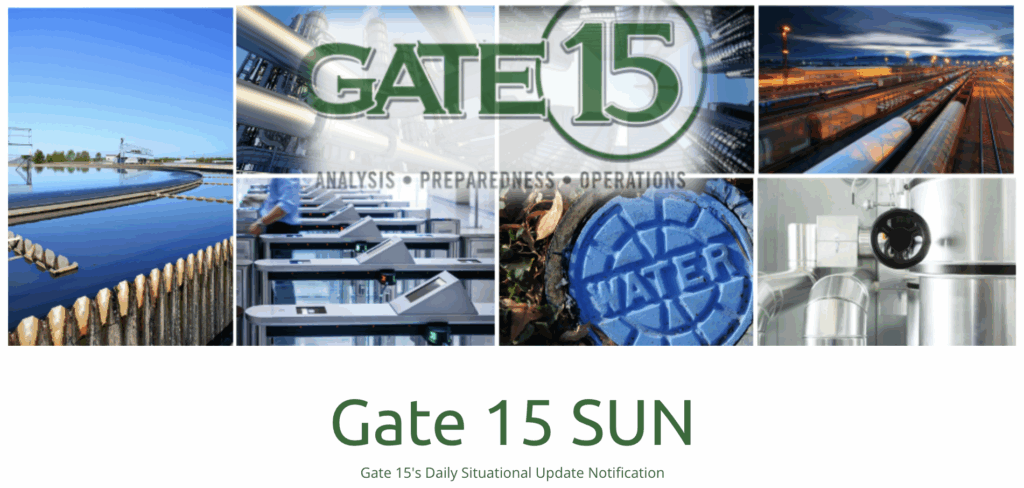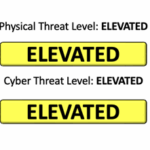
Faith-Based Daily Awareness Post 8 October 2025
Faith-Based Security Headlines
These updates are shared to help raise the situational awareness of Faith-Based organizations to best defend against and mitigate the impacts from all-hazards threats including physical security, cybersecurity, and natural disasters.
In Chicago, clergy and faith-based protesters say ICE is threatening their religious freedom
Religious and civic leaders in Chicago are vocally challenging federal immigration enforcement actions, particularly at a suburban ICE facility in Broadview, IL. Clergy say agents have used pepper balls and tear gas even while worshippers prayed, arguing such tactics violate their rights to religious expression and free speech. In response, journalists, protesters, and religious figures have filed a federal lawsuit accusing the Trump administration claiming a “pattern of extreme brutality” intended to suppress dissent and silence protest through violence and intimidation. Meanwhile, Pope Leo XIV has urged U.S. bishops to speak out forcefully against Trump’s immigration crackdown and the treatment of migrants, after receiving letters from fearful immigrant communities. At the same time, the federal government has deployed National Guard troops to the Chicago area (and plans for deployment in Memphis), under a broader strategy to bolster immigration and crime enforcement, triggering legal challenges from Illinois officials who argue the deployment violates state authority and civil-military norms.
Analyst Comments: The escalating conflict between faith leader, immigration authorities, and federal policy illustrates a deepening tension between civil liberties and law enforcement priorities. The clergy-led protests in Chicago highlight how religious freedom claims are increasingly intersecting with immigration activism, framing enforcement actions as not only political but also moral violations. The lawsuit filed against ICE shows the growing concerns over the militarization of immigration control and the effect on the First Amendment right. Pope Leo XIV’s intervention signals a broader moral reckoning within the global Catholic community, urging U.S HOWs leaders to reassert the Church’s historical advocacy for migrants and humanitarian principles. Meanwhile, the deployment of National Guard troops to assist immigration operations in urban areas such as Chicago and Memphis raises significant questions about federal overreach, the blurring of military and civilian roles, and the potential for escalating community mistrust.
Nor’easter could bring heavy rain, coastal flooding to East Coast
A strong costal storm, likely to take the form of a nor’easter or subtropical hybrid, is expected to develop off the U.S. Southeast coast over the weekend, bringing heavy rain, gusty winds, high surf, and elevated coastal flooding risks from the Carolinas through the Mid-Atlantic and potentially into New England. Meanwhile, in the Southwest, Tropical Storm Priscilla’s remnant moisture is being pulled northeastward into the region, with forecasts warning that several inches of rain could fall in just a few days, enough in arid terrain and dry washes to trigger dangerous flash flooding.
Analyst Comments: These concurrent weather systems show the increasing complexity and interconnectedness of U.S. climate and weather patterns. The potential nor’easter along the East Coast and remnants of Tropical Storm Priscilla in the Southwest demonstrate how seasonal transitions can amplify storm formation and moisture transport across regions. For emergency managers and local governments, this shows the need for proactive coordination especially around flood preparedness, infrastructure resilience, and communication with at-risk communities.
Lessons from the Ashes: Post-Incident Analysis
The Gate 15 article “Lessons from the Ashes: Post-Incident Analysis” argues that organizations should treat security incidents not merely as crises to recover from but as opportunities to learn and strengthen resilience. It defines a post-incident analysis (or after-action review) as a structured, no-blame review of what happened, how the response unfolded, and why it did so, with the goal of uncovering root causes and decision-making gaps. The authors stress the importance of transparency, clear timelines, stakeholder interviews, and comparison against predefined response plans. Crucially, the output must include actionable recommendations, assigned ownership, deadlines, and integration into the organization’s culture and incident response playbooks. They highlight data showing that many organizations experience repeat ransomware attacks, making continuous learning and adaptation vital. Ultimately, the article contends that embedding post-incident analysis into routine operations helps shift organizations from reactive to proactive postures in cybersecurity.
Weekly Security Sprint EP 130. The Evangelist has returned! Cybersecurity Awareness Month and more!
The Gate 15 Security Sprint is a weekly rundown of the week’s notable all-hazards security news, risks and threats and some of the key focus areas for organizations to consider behind the headlines. Gate 15 team members discuss physical security, cybersecurity, natural hazards, health threats and other issues across our environment.
In this week’s Weekly Security Sprint Andy and Sadie Anne Jones cover the following topics:
- Tribal-ISAC Unveils Cybersecurity Report & Tribal-ISAC cybersecurity report delivers data, insights into risks
- (TLP:CLEAR) WaterISAC Physical Security Advisory Committee: Insider Threat Management – Fact Sheet.
- Colin Wood on Bluesky: “October isn’t only cyber awareness month. It’s also National Popcorn Poppin’ Month, National Adopt a Shelter Dog Month and Eczema Awareness Month. There’s something for everyone, really” It’s also National Pizza Month!
The above Gate 15 Weekly Security Sprint website also provides links to many security-related items of interest.
Information on other Gate 15 podcasts can be found at Podcast.
More Faith-Based Stories
- Vandalism at Cavalry Chapel in Sioux Falls points to antisemitism
- Detroit church arson: Public asked to identify man holding turkey baster near fire
- Minneapolis mosque reports break-in a week after fire, urges investigation of possible religious bias
- Far Rockaway, Queens Parish Vandalized for Second Time in 4 Days: ‘We’re Under Attack’
- Metro Atlanta synagogues on high alert after deadly U.K. terror attack on Yom Kippur
- ‘I don’t feel safe any more’: Dearborn’s Arab Americans on rising Islamophobia
- Congregations in Minnesota relying on consultants amid security concerns
- Tracker: 500 Attacks on U.S. Catholic Churches Since May 2020; Last Updated October 8, 2025
- ‘Unconscionable’: MAGA Pastor Calls for Executing ‘Rebellious’ Black Youth, Citing Death By Stoning In Old Testament
- Police investigate hate crime after mosque set on fire in English coastal town
- British Jews further tighten security measures after Yom Kippur attack in Manchester
- High security a fact of life for UK Jewish community living in fear of attack
- 49-Year-Old Worshipper Killed in Copenhagen Mosque Shooting
- Trump’s latest deployment
- GOP senators increasingly anxious about Trump’s aggressive use of National Guard
- ICE bought vehicles equipped with fake cell towers to spy on phones
- Is the government shutdown impacting info sharing for healthcare cyber threats?
- Lowest Fiscal Year for Border Patrol Apprehensions Since 1970
- Cyber Awareness Month: Cloud and Application Security Best Practices
- Russia Says ‘Momentum’ for Ukraine Peace Deal Has Faded, Blames U.S. for Worsening Ties
- Hamas and Israel enter a third day of Gaza peace talks with top Trump envoy expected to join
- Dept. of State Security Advisories
More Security-Focused Content

The FB-ISAO’s sponsor Gate 15 publishes a daily newsletter called the SUN. Curated from their open source intelligence collection process, the SUN informs leaders and analysts with the critical news of the day and provides a holistic look at the current global, all-hazards threat environment. Ahead of the daily news cycle, the SUN allows current situational awareness into the topics that will impact your organization.


